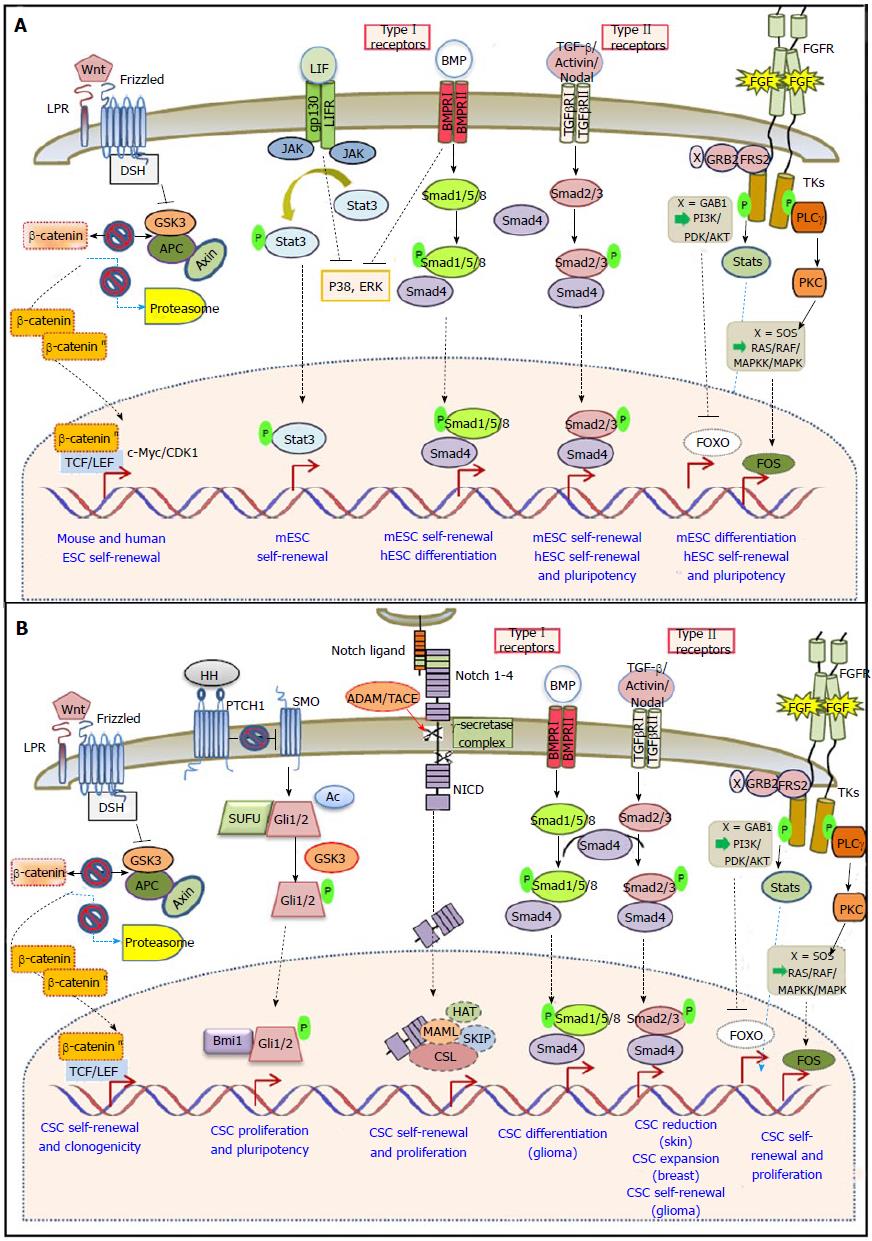Copyright
©The Author(s) 2015.
World J Stem Cells. Oct 26, 2015; 7(9): 1150-1184
Published online Oct 26, 2015. doi: 10.4252/wjsc.v7.i9.1150
Published online Oct 26, 2015. doi: 10.4252/wjsc.v7.i9.1150
Figure 1 Core signaling pathways in embryonic stem cells and cancer stem cells.
A: Mouse ESCs require concerted LIF/BMP signaling to sustain self-renewal and pluripotency, whereas hESC pluripotency depends on the activity of the TGF-β and the FGF pathway. Wnt signaling is important for pluripotency in both species; B: Wnt, Hedgehog, Notch and FGF signaling pathways are associated with CSC self-renewal, while BMP signaling is implicated in CSC differentiation. The TGF-β/Activin/Nodal pathway has a controversial role in CSCs depending on cancer type. ESCs: Embryonic stem cells; CSCs: Cancer stem cells; hESC: Human ESCs; APC: Adenomatous polyposis coli; Dsh: Dishevelled; FGF: Fibroblast growth factor; GSK3: Glycogen synthase kinase 3; JAK: Janus-family tyrosine kinase; LRP: Lipoprotein receptor-related protein; PKC: Protein kinase C; SUFU: Suppressor of fused homolog; TCF/LEF: Tcell factor/Lymphocyte enhancer binding factor.
- Citation: Hadjimichael C, Chanoumidou K, Papadopoulou N, Arampatzi P, Papamatheakis J, Kretsovali A. Common stemness regulators of embryonic and cancer stem cells. World J Stem Cells 2015; 7(9): 1150-1184
- URL: https://www.wjgnet.com/1948-0210/full/v7/i9/1150.htm
- DOI: https://dx.doi.org/10.4252/wjsc.v7.i9.1150













